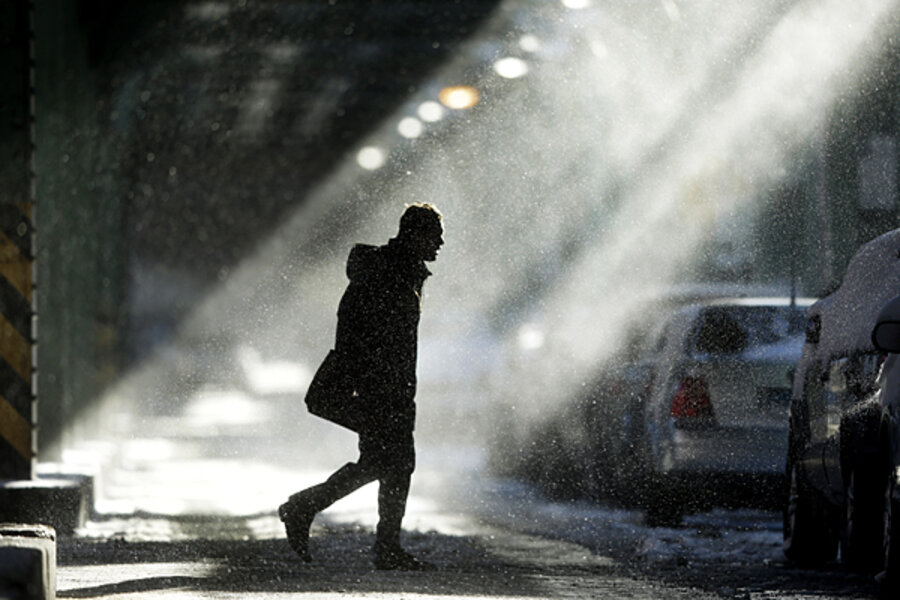Winter storm Janus: Natural gas prices soar in Northeast
Loading...
Winter storm Janus is bringing the heaviest snowfall of the season – and some of the highest natural gas spot prices ever – to the Northeast United States.
The extreme weather shut down roads, closed schools, and grounded flights across New York, Washington, Boston, Philadelphia, and elsewhere on the East Coast. Even as the snowfall eases, bitterly cold weather is expected to remain, which means little relief for utilities and grid operators scrambling to keep up with heating and electricity demands.
The supply-demand imbalance has already sent the spot price of some regions' natural gas soaring more than eight times its prestorm level. Consumers aren't likely to see a change that dramatic on their utility bills anytime soon, but these dramatic spikes do not bode well for long-term heating and electricity costs.
"While supply is greatly increased because we have plenty of natural-gas production, right now we have a transportation and storage issue," Dennis Weinmann, a principal at Coquest Inc., a Dallas energy brokerage and consulting firm, told The Wall Street Journal. "We don't have gas where we need it right this second."
On a typical day, industry watchers say the Northeast's natural gas infrastructure is in need of an upgrade, particularly as natural gas production booms in the US. When extreme winter hits suddenly, and everyone stays home and turns up the heat, the strain on that pipeline system increases. Nearly all natural gas pipelines headed into New York and New England were constrained Wednesday, according to the US Energy Information Administration (EIA).
Natural gas futures prices, not affected by the immediate shortage, closed up 2.4 percent to $4.43 per million British thermal units (Btu) on the New York Mercantile Exchange Tuesday – its highest since late December.
Prices surged on the spot market with natural gas in New York up 785 percent to a record $120.75 per million Btu Wednesday. New England prices were up 204 percent Wednesday to $56.25.
In the short term, customers in the Northeast can expect higher monthly bills on account of staying in more and turning up the heat. In the longer term, the day-to-day costs of continued spikes in demand and strain on pipeline infrastructure are likely to trickle down to consumers.
When demand spikes – as during extreme heat or extreme cold – utilities urge customers to conserve energy by turning off unused lights, not running heavy appliances during mornings and early evenings, and turning the thermostat down slightly lower than usual (without compromising safety).
About half of US households use natural gas as their primary heating fuel, according to EIA. It also plays an increasing role in the nation's electricity mix as power companies have shifted away from coal to cheaper, cleaner natural gas.








